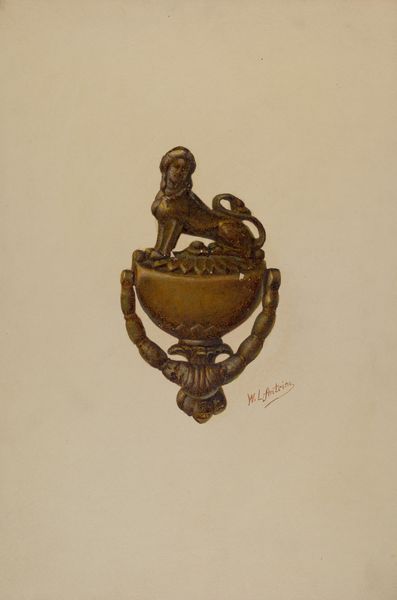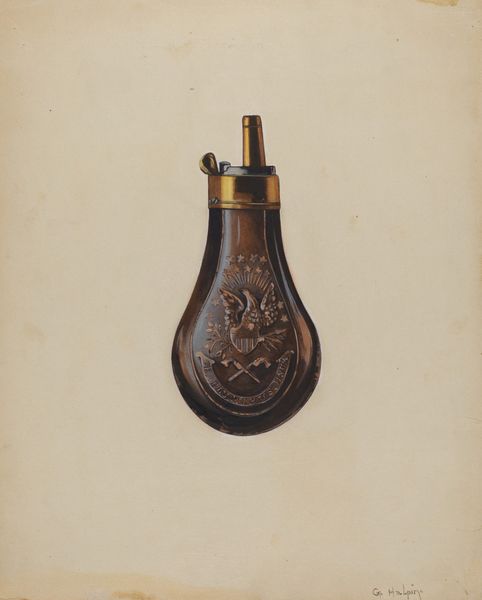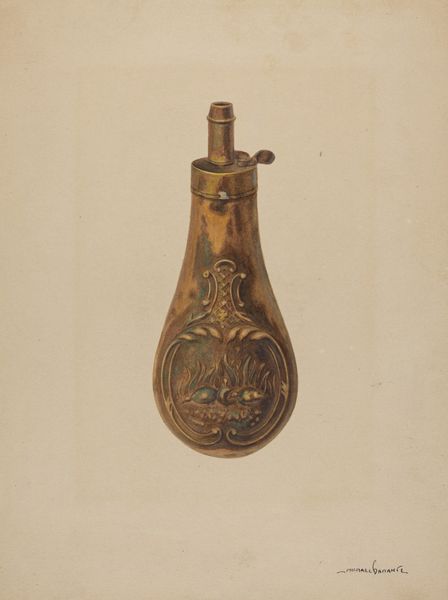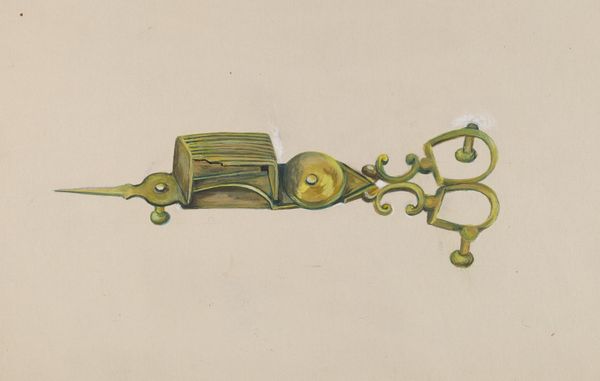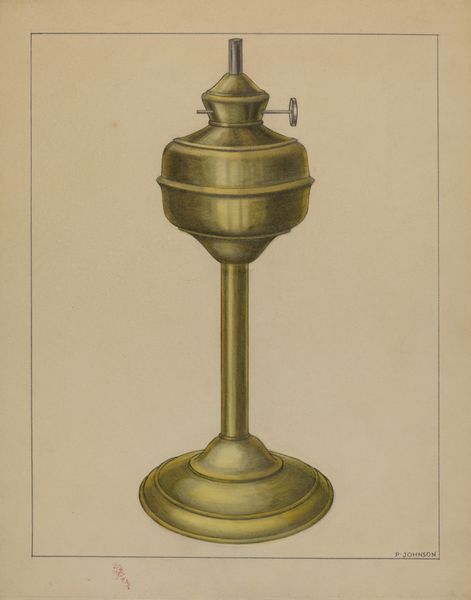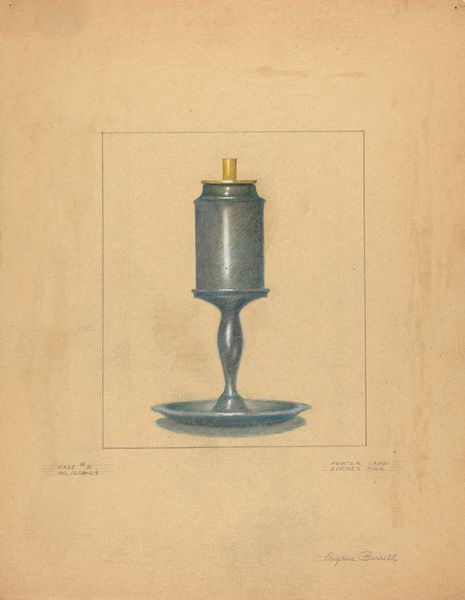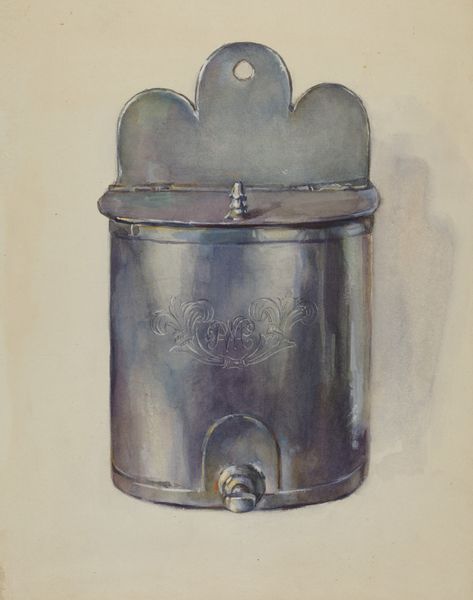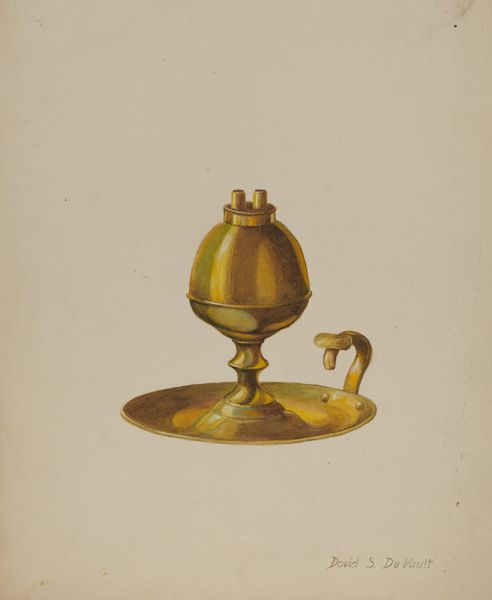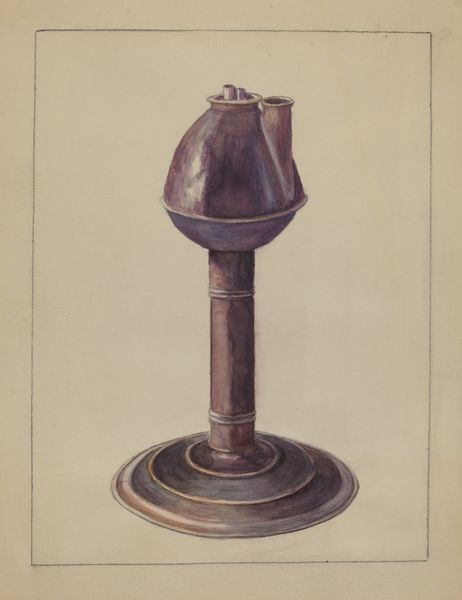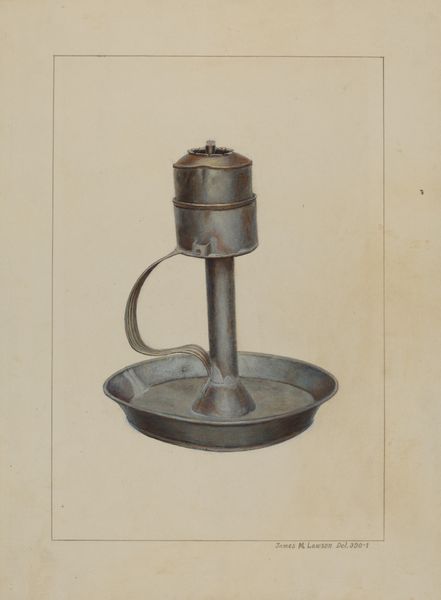
drawing, watercolor
#
drawing
#
watercolor
#
coloured pencil
#
watercolor
Dimensions: overall: 45.5 x 30.6 cm (17 15/16 x 12 1/16 in.)
Copyright: National Gallery of Art: CC0 1.0
Curator: What strikes me first about this rendering is its quiet stillness; the meticulous execution brings an everyday object into sharp focus. Editor: Indeed. We're looking at William L. Antrim's "Door Knocker," dating circa 1937. The medium appears to be watercolor and drawing, perhaps even colored pencil to enhance the patina of aged brass. I am instantly considering the artist's choice to render a utilitarian object. It prompts reflection upon the processes involved in crafting, using, and replicating this piece, raising it beyond mere functionality. Curator: The composition invites a structural analysis, with the knocker centered and isolated against a neutral background. The play of light and shadow gives it form. The oval plaque bears an inscription—the letters "DH," if I see correctly— suggesting personalization and ownership. How does this layering of meaning influence your interpretation? Editor: Knowing that the image comes from the late 1930s also interests me, since so many artists employed by the WPA focused on American industry and manufacturing at the time. I'm thinking about where the original object might have come from—whose hands might have cast this doorknocker, which tradesman's door it originally graced, and how its removal for documentation impacts its relationship to its source. It's fascinating to imagine these processes intersecting. Curator: Interesting points to consider in relation to that specific moment in time, as there's something universal in how this piece emphasizes the power of an entryway: The doorknocker becomes a threshold, symbolically. Its very existence depends on two distinct sides and serves as the device, quite literally, that invites crossings. Editor: Absolutely. I'm particularly interested in how Antrim’s work spotlights a particular kind of American craftsmanship at a key point in history, and how the context of labor shifts the very aesthetic perception and reception of this particular medium. Curator: The object then is presented as both unique and ubiquitous—existing somewhere between crafted, and thus original object, and mass produced widget that belongs to so many. That dichotomy offers up another symbolic thread to unravel... Editor: Precisely! All this to consider as we stand here viewing it...Thank you for these wonderful considerations about a piece seemingly simple. Curator: Thank you. The artwork yields such great contemplation from both angles.
Comments
No comments
Be the first to comment and join the conversation on the ultimate creative platform.
